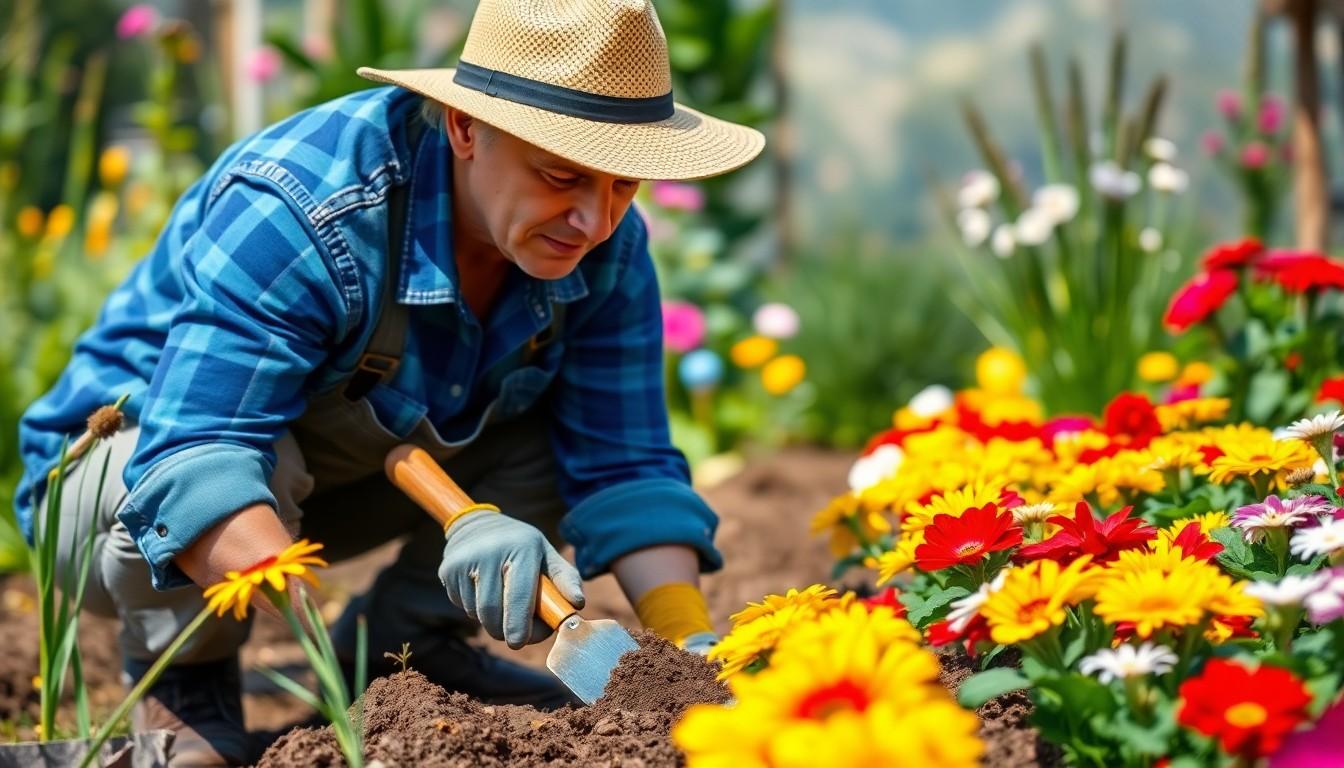Gardening can feel like a battle between nature and the gardener, but with the right tools, it’s more like a dance-off with Mother Nature. From trowels that dig deep to shears that snip with precision, every tool has a role to play in this green-thumbed adventure. Whether you’re a seasoned pro or just starting out, understanding the different types of gardening tools can turn your garden from a jungle into a paradise.
Types of Gardening Tools
Gardening tools come in a variety of types designed for specific tasks to streamline gardening efforts. Hand tools include trowels, pruners, and weeders, essential for planting, trimming, and maintaining plants. Power tools, such as tillers and lawnmowers, enhance efficiency and reduce manual labor, making larger garden projects more manageable.
Soil care tools, including shovels and rakes, assist with turning and aerating soil, promoting healthy plant growth. Specialized tools like dibbers and seeders cater to particular gardening needs, allowing for precise planting. Additionally, watering tools, such as hoses and sprinklers, ensure that plants receive adequate hydration.
For larger gardens, consider wheelbarrows and garden carts, which aid in transporting materials with ease. Protective gear, like gloves and knee pads, keeps gardeners safe and comfortable during work. Each tool serves a unique purpose, contributing to overall gardening success.
Selecting the right tool depends on specific gardening tasks and personal preferences. Understanding the diverse range of gardening tools helps both novice and experienced gardeners enhance their skills in managing their gardens effectively. With the proper tools, anyone can cultivate an enjoyable and productive gardening experience.
Hand Tools
Hand tools are essential for various gardening tasks. These tools enable precise work and foster a connection between gardener and plants.
Trowels and Hand Forks
Trowels assist in digging small holes, transplanting, and mixing soil. A garden fork complements this by aerating soil and breaking up clumps. Trowels come in various shapes and sizes, making them suitable for different soil types and plant sizes. Hand forks also vary, often featuring three or four sturdy tines to maximize efficiency. Both tools contribute to effective planting and soil preparation, making them vital for enthusiastic gardeners.
Pruners and Shears
Pruners are ideal for clipping branches and stems, providing clean cuts that promote healthy plant growth. Shears, on the other hand, work well for trimming hedges and larger plants. Various styles exist, such as bypass pruners which offer precision for delicate tasks and anvil pruners suitable for tougher branches. Proper maintenance of these tools ensures longevity and optimal performance. Together, pruners and shears enhance a gardener’s ability to shape and maintain their green space.
Power Tools
Power tools simplify various gardening tasks and increase efficiency. They help gardeners tackle larger areas with ease.
Lawn Mowers
Lawn mowers serve as essential tools for maintaining grass health and appearance. They come in different types, including push, self-propelled, and riding mowers. Each type caters to specific lawn sizes, making it important to choose the most suitable option. Traditional gas-powered mowers provide power for large areas, while electric mowers offer quiet operation with minimal maintenance. Some models even feature mulching capabilities, which return nutrients to the soil. Understanding the necessary features, such as cutting width and height adjustment, enhances the mowing experience and promotes a lush lawn.
Trimmers and Edgers
Trimmers and edgers complement lawn mowers by refining edges and hard-to-reach areas. Trimmers handle overgrown grass and weeds around flower beds or fences, ensuring a neat appearance. Various designs exist, from corded electric to battery-powered options, allowing for flexibility in usage. Edgers provide defined borders along sidewalks and driveways, offering a polished look to landscaping. Selecting the right blade type and cutting depth ensures optimal performance. Investing in quality trimmers and edgers streamline garden maintenance and elevate overall aesthetics.
Specialty Tools
Specialty tools enhance gardening efficiency and precision. These tools address specific needs, ensuring optimal plant growth and care.
Soil Testers
Soil testers assess soil health, directing gardeners in their planting strategies. These devices provide crucial information about pH levels and nutrient content. Different models, including handheld meters and kits, offer versatility based on garden size. Accurate soil testing reveals deficiencies and excesses, helping to make informed decisions about fertilization and amendments. Regular testing fosters healthier plants and improves overall garden productivity.
Seed Planters
Seed planters streamline the seeding process, ensuring uniform depth and spacing. Various types cater to different garden sizes, from hand-held planters for small beds to more automated options for larger plots. Adjustable settings on these tools allow for customization based on seed type and soil condition. Effective seed planters minimize waste and maximize germination, contributing to a thriving garden. Utilizing these tools promotes orderly planting and enhances garden aesthetics.
Maintenance and Care of Gardening Tools
Regular maintenance significantly extends the lifespan of gardening tools. Cleaning tools after each use prevents soil and plant residue buildup. A simple rinse with water often removes dirt, while a brush can help dislodge stubborn debris.
Inspecting tools for damages is essential. Check for rust on metal components and ensure that wood handles are free from splinters. Promptly address any issues by sanding, oiling, or replacing affected parts to maintain optimal functionality.
Lubricating moving parts increases efficiency. Apply machine oil to blades and hinges to ensure smooth operation. Routine lubrication prevents wear and tear, contributing to longer-lasting tools.
Storing tools correctly protects them from the elements. Dry tools completely before storage to prevent rust formation. Utilize a designated storage area, such as a shed or garage, for organization and easy access.
Sharpening blades is crucial for effectiveness. Sharp tools make clean cuts, reducing stress on plants. Use a sharpening stone or file in accordance with the tool type to maintain blade edges.
Rotating tools can also mitigate wear. Regularly alternate tool usage to prevent overuse of a single item, distributing wear evenly. This practice enhances the longevity of gardening tools across various tasks.
Finally, keeping an inventory helps track tools. Log tool types, conditions, and maintenance schedules to ensure timely care. This management strategy promotes a proactive approach to maintaining a well-equipped garden.
Having the right gardening tools can make a significant difference in a gardener’s experience. Each tool serves a unique purpose and contributes to the overall health and beauty of the garden. By understanding the various types of tools available and their specific applications, gardeners can work more efficiently and effectively.
Proper maintenance of these tools is equally important. Regular care not only extends their lifespan but also ensures optimal performance. With the right tools and knowledge in hand gardeners can cultivate their green spaces with confidence and joy.


